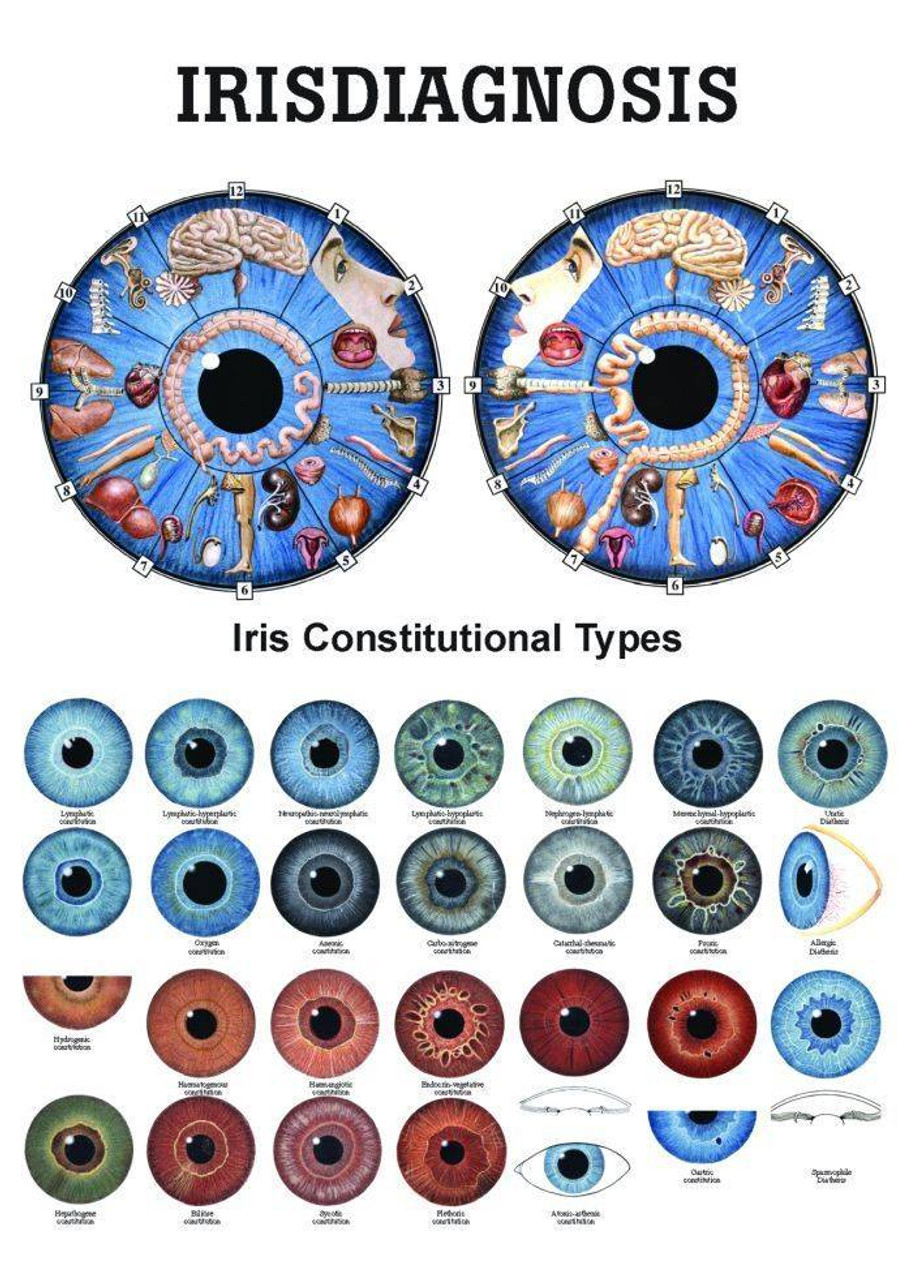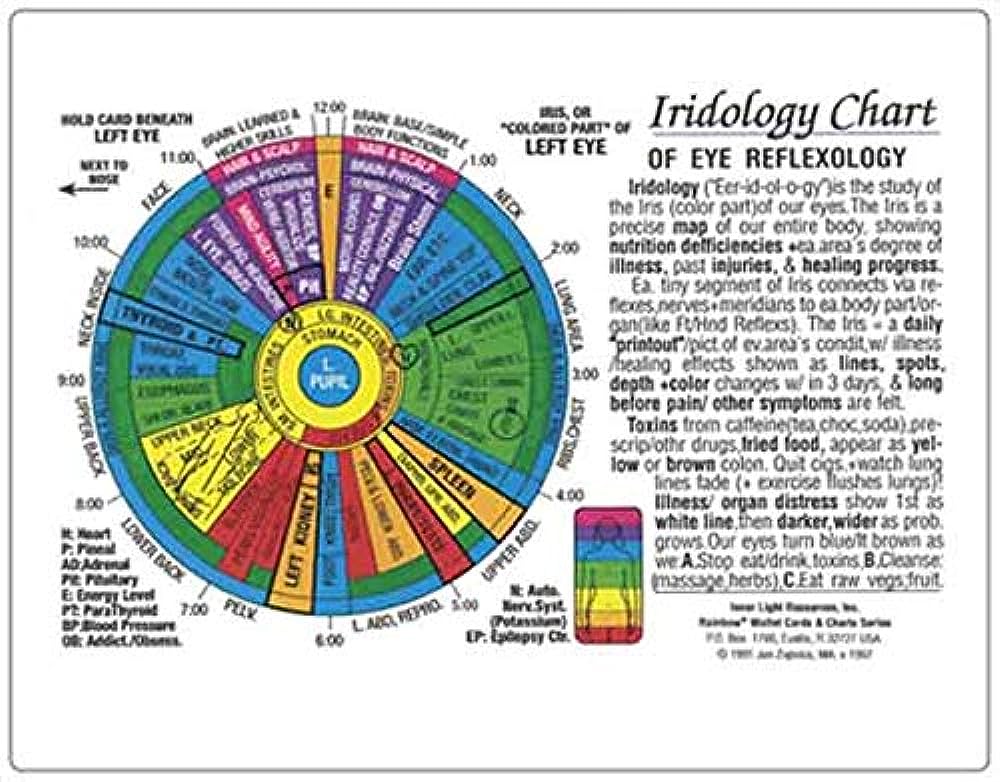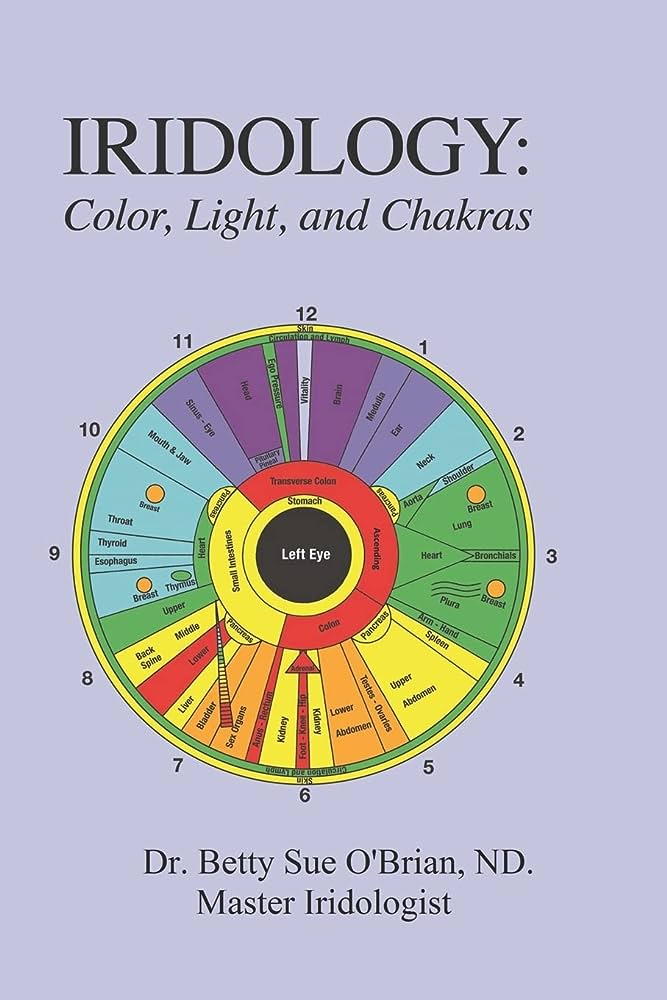Address
6050 N 9th Ave Suite D Pensacola FL 32504
Work Hours
Mon: 10am – 6pm
Tues: 10am – 6pm
Wed : 9am – 4pm
Thurs: 9am – 12pm
Fri - Sat- Sun: Closed
Address
6050 N 9th Ave Suite D Pensacola FL 32504
Work Hours
Mon: 10am – 6pm
Tues: 10am – 6pm
Wed : 9am – 4pm
Thurs: 9am – 12pm
Fri - Sat- Sun: Closed

Are you curious about the fascinating world of iridology and how it can help improve your overall health and well-being? Look no further! In this comprehensive guide, we will explore the intricacies of iridology charts and how they can provide valuable insights into your body’s condition. Whether you are struggling with ongoing health concerns or simply seeking preventative measures, certified iridologist and natural health advisor, Holly Gibson, is here to assist you. With her extensive knowledge and experience in the alternative health field, Holly will discuss your ailments in detail, address your fears and concerns, and provide you with a solid plan for optimal well-being. Don’t miss out on this opportunity to understand iridology charts and unlock the secrets to a healthier, more vibrant you!

This image is property of i.etsystatic.com.
Iridology is a holistic diagnostic tool that involves examining the iris of the eye to gain insights into a person’s physical, mental, and emotional health. The practice is based on the belief that the iris reflects the condition of various organs and systems in the body. By studying the patterns, colors, and markings in the iris, an iridologist can assess a person’s overall health and identify any potential imbalances or weaknesses.
The history of iridology can be traced back to ancient civilizations such as the Egyptians and the Greeks, who recognized the connection between the eyes and the body. However, modern iridology as we know it today was developed in the 19th century by a Hungarian physician named Ignatz von Peczely. He observed that changes in the iris coincided with specific illnesses or injuries in his patients, leading him to develop the first iris chart.
Iridology works on the principle that the iris is a reflection of the body’s internal conditions. According to iridologists, different areas of the iris correspond to specific organs and body systems. By examining the iris, an iridologist can identify potential health issues or imbalances in these corresponding areas. The colors, patterns, and markings in the iris are analyzed to determine the overall health status of an individual.
The iris, which is the colored part of the eye, is considered significant in iridology. It is believed to contain information about a person’s inherited strengths and weaknesses, as well as their current state of health. Iridologists examine the various zones and structures within the iris to gather information about the body as a whole.
In iridology, the iris is divided into different zones, each corresponding to a specific organ or system in the body. By examining these zones, iridologists can pinpoint areas of potential concern or imbalance. For example, the top portion of the iris is said to represent the head and neck, while the outer edge of the iris corresponds to the limbs and extremities.
There are five reflexive patterns in iridology, which can provide valuable insights into a person’s health. These patterns include the neurological, digestive, circulatory, lymphatic, and elimination reflexes. By identifying these patterns in the iris, an iridologist can gain a better understanding of any underlying issues within these systems.
Iridology recognizes three primary iris constitutions: the neurogenic, lymphatic, and hematogenic constitutions. Each constitution is associated with specific strengths and weaknesses in the body. For example, individuals with a neurogenic constitution may be more prone to nervous system disorders, while those with a lymphatic constitution may be more susceptible to immune system imbalances.
Iridology charts are used as a guide to interpret the various iris patterns, colors, and markings. These charts typically depict the different zones and structures within the iris, along with corresponding organ and system references. By referring to the chart, an iridologist can analyze the iris and determine the potential health implications.

This image is property of Amazon.com.
Different iris colors can provide valuable information about a person’s health. For example, a blue iris may indicate a more relaxed nervous system, while a brown iris may suggest potential digestive imbalances. Iridologists study the variations in iris colors and their significance in order to assess a person’s overall health status.
The iris can contain a variety of markings and patterns, such as spots, lines, and rings. These markings can indicate areas of potential weakness or imbalance in the corresponding organ or system. By carefully analyzing these markings, an iridologist can gain insights into a person’s health and make personalized recommendations for improvement.
In addition to the iris, an iridologist also examines the pupil and sclera (white of the eye) for further insights into a person’s health. The size, shape, and reactions of the pupil can reveal information about the autonomic nervous system, while the color and condition of the sclera can indicate potential liver or digestive issues.
It is important to note that iridology is not a diagnostic tool for specific diseases. Instead, it provides a holistic assessment of a person’s overall health and highlights potential areas of concern. Iridologists do not claim to diagnose or treat specific illnesses but rather aim to provide valuable insights and recommendations for maintaining or improving overall well-being.

This image is property of cdn11.bigcommerce.com.
The scientific community remains skeptical about the scientific validity of iridology. While there is anecdotal evidence and individual success stories, there is limited scientific research to support its effectiveness. Critics argue that the iris changes with age and can be influenced by factors such as genetics, medication, or eye injuries, making it difficult to draw accurate conclusions solely based on iris analysis.
Like any health-related practice, it is important for iridologists to adhere to ethical guidelines and principles. Iridology practitioners should be transparent about the limitations of their practice and avoid making unfounded claims. It is crucial to maintain client confidentiality and ensure informed consent for any assessments or treatments. Additionally, practitioners should continuously update their knowledge and skills through professional development opportunities.
As an individual, you can learn to recognize patterns and markings in your own eyes by studying iridology charts and comparing them to your own iris. This self-awareness can help you identify potential areas of weakness or imbalance and prompt you to seek further guidance or make necessary lifestyle changes.
By understanding the basic concepts of iridology and familiarizing yourself with your own iris, you may be able to identify potential health issues at an early stage. For example, if you notice specific markings or discolorations in your iris that correspond to a particular organ or system, it may indicate the need for further investigation or preventative measures.

This image is property of images.ctfassets.net.
Iridology can be used as a complementary tool alongside other health practices and modalities. By incorporating iridology into your holistic health routine, you can gain a more comprehensive understanding of your overall well-being. It can serve as a guide to identify areas that may need attention and support your efforts in achieving optimal health.
When seeking an iridology practitioner, it is essential to consider their credentials and training. Look for practitioners who have received formal education and certification in iridology from reputable institutions. Additionally, consider their experience and ongoing professional development to ensure they stay up-to-date with the latest advancements in the field.
Before choosing an iridology practitioner, it is advisable to ask relevant questions to ensure you feel comfortable and confident in their expertise. Inquire about their approach, methodologies, and the scope of their practice. Ask for client testimonials or references to get a better understanding of their track record and success rate.
To find an iridology practitioner in your area, you can start by conducting online research or asking for recommendations from trusted sources. Look for reviews or testimonials from previous clients to gauge their reputation and effectiveness. It may also be helpful to contact local holistic health centers or wellness clinics for recommendations.

This image is property of Amazon.com.
Real-life case studies provide firsthand accounts of the application of iridology and its impact on individuals’ health. These stories highlight how iridologists have identified potential health issues and guided individuals towards making positive changes in their lives. Case studies can serve as valuable examples of the potential benefits of iridology.
Testimonials from satisfied clients can offer insights into the personal experiences and results achieved through iridology consultations. Reading about others’ positive experiences may help you gain confidence in the practice and its ability to provide valuable information for improving overall health and well-being.
Visual evidence in the form of before and after photos can provide a visual representation of the changes and improvements observed through iridology consultations. These photos can showcase the potential transformations and motivate individuals to explore iridology as a means of enhancing their own health journey.
Iridology is often considered an integral part of holistic health practices. It complements other modalities such as herbal medicine, nutrition, and lifestyle changes by providing a unique perspective on an individual’s health. By considering the physical, mental, and emotional aspects of a person, iridology contributes to a holistic approach to well-being.
The eyes are connected to the body through various physiological and energetic pathways. In iridology, the relationship between the eyes and the body is emphasized, with the iris serving as a mirror of the internal conditions. This connection signifies the interdependence of different systems and highlights the importance of holistic approaches to health.
To incorporate iridology into a holistic health routine, it is important to work alongside other health practitioners and professionals. By integrating the insights gained from iridology with other health practices, individuals can develop a comprehensive and personalized plan to address their specific health concerns and promote overall wellness.
Iridology is not considered a diagnostic tool for specific diseases. Its purpose is to provide a holistic assessment of a person’s health and potential areas of concern. It is important to consult with healthcare professionals for a diagnosis and treatment of specific diseases or conditions.
While iridology can identify potential areas of weakness or imbalance, it cannot predict future health issues with certainty. The iris provides insights into a person’s current health status and may indicate predispositions or potential vulnerabilities. However, other factors such as lifestyle choices and environmental influences also play a significant role in shaping future health outcomes.
Iridology can be used for children and infants as a non-invasive and gentle assessment tool. However, it is important to work with an experienced iridologist who specializes in pediatric iridology. The interpretation of iris patterns and markings in children may differ from that of adults, requiring a deeper understanding of developmental stages and considerations.
Understanding iridology can offer valuable insights into your overall health and well-being. By recognizing patterns and potential imbalances in your iris, you can take proactive steps towards maintaining or improving your health. Iridology encourages self-awareness and empowers individuals to make informed choices for their own well-being.
Incorporating iridology into a holistic approach to health allows for a comprehensive evaluation of physical, mental, and emotional aspects. By considering all these elements, individuals can gain a more complete understanding of their health and work towards true well-being.
While iridology may have its skeptics, it remains a valuable tool for those seeking a holistic perspective on their health. As with any health practice, it is important to approach iridology with an open mind, recognizing its limitations and potential benefits. By working with qualified iridologists and incorporating their insights into a holistic health routine, you can embark on a journey towards improved health and well-being.